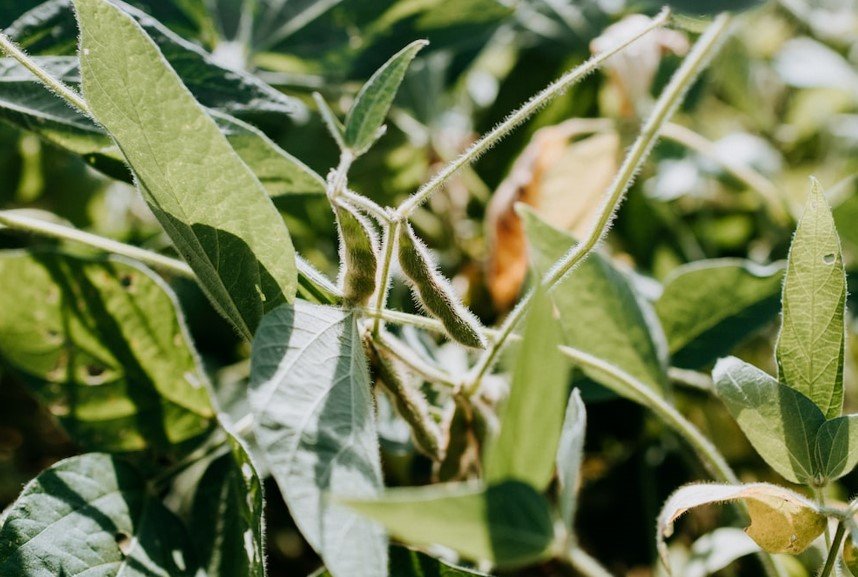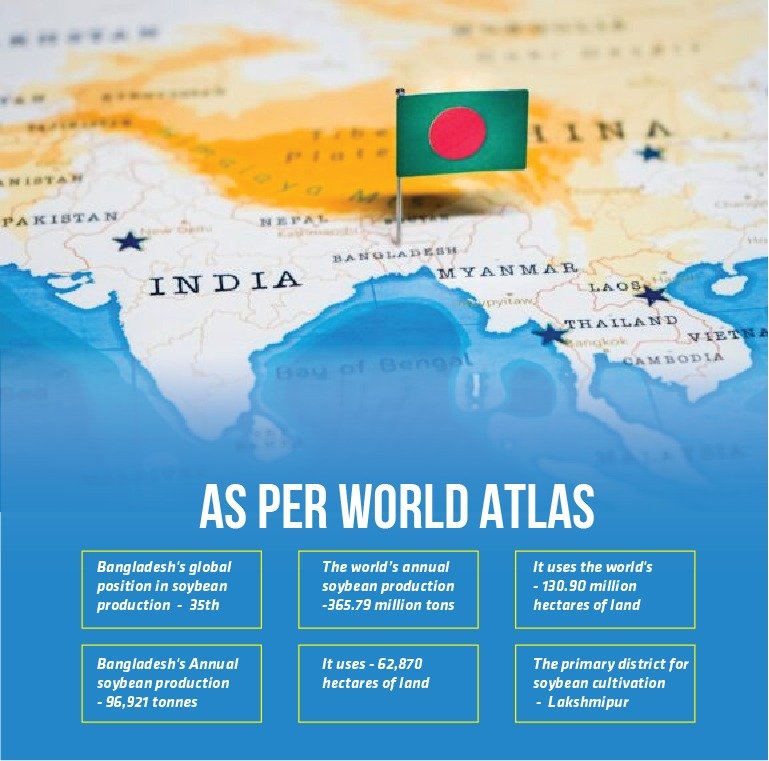Achieving domestic production growth not only addresses economic challenges but also contributes significantly to poverty reduction, emphasizing the imperative for a strategic shift towards import substitution and sustainable agricultural practices
In the global context, Bangladesh stands as the third-largest food importer after China and the Philippines, according to the Food and Agriculture Organisation’s (FAO) ‘World Food and Agriculture Annual Statistical Booklet 2023’. The report highlighted a total food product import of 12.5 million tonnes, with a substantial portion allocated to wheat, edible oil, and milk powder. This report has sparked discussions on the need for Bangladesh to boost its domestic production, especially in the realm of edible oil. In Bangladesh, among edible oils, soybean oil has traditionally been the cooking oil of choice. However, due to affordability considerations, there has been a shift towards greater consumption of palm oil. The private sector plays a crucial role in meeting this surging demand. Leading companies have invested significantly in crushing soy seeds and establishing large grinding mills, pushing the domestic production of soybean oil to 30-40% of total demand. Despite these positive developments, there exists ample opportunity to cultivate soybeans domestically on a large scale.
You can also read: AL’s Manifesto Tills the Soil for Agricultural Excellence

Bangladesh’s Current Soybean Production Scenario

As per WorldAtlas, Bangladesh ranks 35th globally in soybean production, with Lakshmipur standing out as the primary district for soybean cultivation in the country.
A total of 130.90 million hectares of land are used to produce 365.79 million tonnes of soybeans annually throughout the world. With a cultivated area of 62,870 hectares, Bangladesh produces 96,921 tonnes of total product annually, or 1.54 tonnes per hectare — significantly below the global average of 2.79 tonnes/hectare. This gap presents an immense growth opportunity for the country.
Areas That are Effective at Growing Soybeans
In Lakshmipur, soybean cultivation on char lands during the monsoon, a non-traditional season, has proven successful, in addressing the crop’s seed crisis. Despite the regular cultivation season being in December-January, farmers have achieved high yields by cultivating soybeans in September-October on char lands. The produced soybeans on char lands are estimated at 10,000 tonnes, valued at Tk200 crore. The Lakshmipur District Agriculture Extension Department plans to cultivate soybeans on 42,000 hectares of non-char land, requiring 2,730 tonnes of seeds. After meeting local demand, the surplus seeds from char lands will be sold to farmers in other regions.
Approximately 5,000 landless farmers on chars along the Meghna River are engaged in soybean farming, with harvesting and selling starting from mid-December. Despite the success, the Bangladesh Agriculture Development Corporation (BADC) faced challenges in selling soybean seeds, selling only 26 tonnes in three districts between December 2020 and January 2021. Due to high demand, farmers preferred to buy seeds directly from the market, with prices ranging from Tk180 to Tk210 per kg for new seeds.

The production decline is attributed to tidal surges on chars, impacting yield. The Noakhali Region Research Department of Bangladesh Agricultural Research Institute (BARI) highlights that soybean cultivation covers three to four lakh hectares across 72 upazilas in 33 districts. About 10 lakh tonnes of soybeans are produced annually, with 60% coming from Lakshmipur. Soybean seeds have been a crucial factor in production, and the hope is that soybean seeds from chars will contribute to resolving the seed crisis. Various organizations, including BADC, sell different soybean seed varieties, and local farmers preserve traditional varieties.
Soybeans are vital for producing over 50 types of feed in Bangladesh, including poultry and floating fish feed. Lakshmipur, recognized as “Soya Land,” is a key district for soybean production in Bangladesh, which is ranked as the 35th largest soybean producer globally.
Optimism and Challenges of Soybean Production
Notably, leading companies have made substantial investments in soybean oil production, with crushing capacities reaching as high as 7,800 tonnes per day. Current domestic production has successfully met 30 to 40 percent of the total demand for soybean oil, reflecting positive strides in the sector. Despite the positive strides made, there is a significant opportunity to expand domestic soybean cultivation on a large scale. This requires the implementation of policy initiatives aimed at bringing non-traditional lands into cultivation, such as the coastal belts of Bangladesh and emerging islets known as chars.
A study titled ‘Challenges and Opportunities in Crop Production in Different Types of Char Lands of Bangladesh’ emphasizes that soybean cultivation in coastal chars has shown promising results. Despite challenges like limited irrigation facilities, low lift pump availability, electricity shortages, and high diesel prices, these operational issues have been successfully addressed in other parts of the country. A comprehensive national plan could mitigate these challenges and establish soybean farming in char lands.
While scientific data indicates uncertainty about the permanence of established chars, their substantial numbers and the population of 5.0 to 10 million residing in them, mostly engaged in agriculture, underscore the potential for positive socio-economic impact. Government intervention not only boosts soybean production but also contributes significantly to poverty reduction, especially among the vulnerable populations inhabiting char lands.

Amidst an economic crisis marked by a shortage of foreign currency, policymakers must acknowledge the imperative for Bangladesh to achieve self-sufficiency in sectors that can save valuable foreign exchange. Shifting towards import substitution as a core policy is crucial, considering Bangladesh’s historical overreliance on imports. With available land, population, and decades of agricultural technological advancements, the nation’s research culture can be harnessed to boost domestic production. It is more prudent to import technical know-how to enhance local production rather than importing beans, saving precious foreign exchange.
Recognizing the time-intensive nature of char land development, initiating the process is essential. The government must formulate concrete policies in the next annual development plan to transform char lands into agricultural powerhouses. While the private sector has demonstrated increased production capacities, the government’s role in setting the stage for this transformation through strategic policies cannot be overstated.
Soybean Journey in Bangladesh
Soybean made its debut in Bangladesh around 1942, but it wasn’t until 1960–61 that concerted efforts were made to promote its cultivation or conduct dedicated research. The pulses and oilseeds division of Bangladesh Agricultural Research Institute (BARI) chose the Pelican and Barnali varieties in 1961 to boost fallow land cultivation during the kharif-2 season. Unfortunately, by the following year, these varieties succumbed to the yellow mosaic virus, leading to a halt in production. In 1972–73, the Mennonite Central Committee (MCC) reintroduced soybeans to Bangladesh. The year 1975 saw the launch of the ‘Bangladesh Coordinated Soybean Research Project,’ a collaboration between Bangladesh Agricultural Research Council (BARC), BARI, Bangladesh Agricultural University (BAU), Bangladesh Institute of Nuclear Agriculture (BINA), Bangladesh Council of Science and Industrial Research (BCSIR), and MCC. The project aimed to explore soybean’s potential as a food crop. Finally, in 1981, the Bragg and Davis varieties were released, but unfortunately, they also fell prey to the yellow mosaic virus and are no longer recommended for cultivation.
Conclusion
Despite positive strides in soybean oil production, there exists substantial untapped potential. The success in char land cultivation highlights a feasible solution, demanding government intervention, policy initiatives, and concerted efforts to transform these areas into agricultural hubs. Achieving domestic production growth not only addresses economic challenges but also contributes significantly to poverty reduction, emphasizing the imperative for a strategic shift towards import substitution and sustainable agricultural practices.


